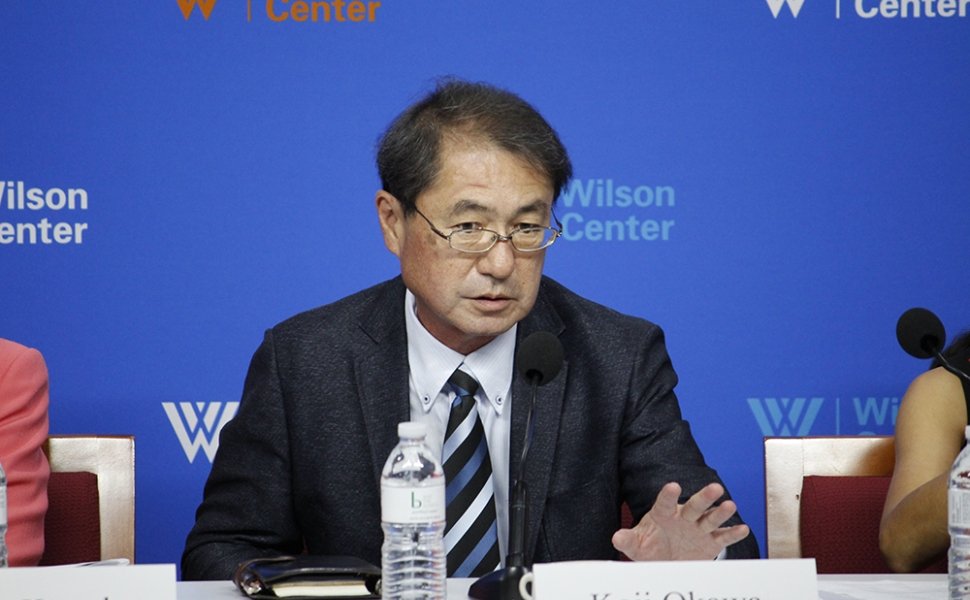Event Recap: Obstacles to Japanese Investment in Latin America


With the decreasing U.S. presence in both diplomacy and trade, Latin America has been looking to increase its trade partnerships beyond the hemisphere. While China’s presence cannot be overstated, Japan has actually been the biggest investor in the region to date most notably in key areas such as the technology sector.
On September 07, 2018 the Latin America Program and Asia Program gathered a panel of experts at the Wilson Center to look at the opportunities and obstacles facing Japanese investment in Latin America.
In many ways, said Masahiko Uchino, from the Embassy of Japan, the trade relationship between Japan and Latin America is strong and growing stronger. Japan’s total exports in 2017 was over 700 billion dollars, of which Latin America accounted for only 4 percent. Mexico, Panama, Brazil, and Chile were the largest importers of Japanese products. In terms of imports to Japan, Latin America accounted for 4.2 percent, almost a perfect balance of trade. Annual total trade grew over 12 percent between 2002 and 2017, with only a small decrease during years of recession. Adding Colombia and Peru to this list, we can see how Japan’s exports are “inexorably linked” to the economies of the Pacific Alliance, said Cynthia Arnson, Director of the Wilson Center’s Latin American Program.
Latin America has “outgrown” the requirements for direct development assistance.
Latin America has “outgrown” the requirements for direct development assistance, continued Arnson, but Japan has been offering technical expertise and assistance. The World Bank’s Barbara Kotschwar also characterized Japan as sort of a “gentle giant” in the region that “doesn’t always promote itself, but has a significant influence on trade and investment in Latin America.”
At the same time, said Kotschwar, Japan does have a Latin America strategy, and “there does seem to be a Japanese model of integration in Latin America,” three prongs: trade, investment, and official development assistance. The evolution of the Japanese experience has been to other experiences, like China, starting out in natural resources, but has diversified in recent decades. Now much more evenly divided into primary manufacturing and services. Steady presences especially since joining IDB 40 years ago. Natural resource imports continue to predominate, but Japan has diversified its imports in Latin America in products such as medical equipment.
Even with respect to primary commodities, Japan’s imports from Latin America have been diverse. Kotschwar explained. When Chilean kiwis were exported to Japan in the 1990s, for example, it was a signal of Chile having not only “world-class kiwis,” and world-class agriculture, but “world-class systems for manufacturing and distribution.” Japan was, and continues to be, viewed as the gold standard for export quality.
Therefore, it can be said that Japan is “not an important market in terms of quantity so much, but in terms of quality.” While “focusing on the quantity of Japanese imports from Latin America is important,” said Kotschwar, “it doesn’t tell you the whole story.” A narrow focus on imports and exports, she also argued, also obscures the true extent of the Japanese presence in the region. For example, Japan is “responsible for a sizable chunk of Latin American products to third markets,” and a number of Japanese companies have gone to Latin America for the relative efficiency of exporting to regional markets. Kotschwar emphasized that “[Japan’s investment model] is the type of investment that Latin America really wants to attract.”
Ryoji Watanabe, Senior Analyst at the Sumitomo Corporation of the Americas, referred to the challenges to Japanese investment in the region from many sides: from protectionist policies in the United States, competition from European firms, and the question of economic security in Latin American countries. He also addressed Japan-specific challenges that have hindered investment in the region, such as the distance between Japan and South America, requiring 24-hour flights from Tokyo to São Paulo, lack of familiarity with Latin America, and the focus on trading with Asian neighbors within Japanese companies.
According to Koji Okawa, Senior Executive Engineer for Toyota’s North American branch, investment in Latin America has always been costly, but rewarding. Although the manufacturing cost in Latin America is “always about 30% more than in Japan or the United States,” he said, and that high cost is driven by high taxes and the complexities of the labor system in many countries. There are likewise high logistical costs for exporting auto parts. But in spite of the expense, Okawa attested to Toyota’s belief that Latin America, particularly Brazil and Argentina, will become a principal market in the future. Given Japan’s aging population, this is critical for the future of Japanese firms.
After all, Chinese investment comes at a very high price: heavy dependence on Chinese capital, which could lead to bankruptcy in certain industries prone to dependency.
Shihoko Goto, Senior Associate at the Wilson Center’s Asia program, later addressed the geopolitical attractiveness of Japan’s presence in Latin America, which has increased due to two recent uncertainties: protectionist policies imposed in Washington, and the ambition of China. For Japan, these external threats present a real opportunity for a sleeping “gentle giant” to awaken as a “roaring tiger” in Latin America. After all, Chinese investment comes at a very high price: heavy dependence on Chinese capital, which could lead to bankruptcy in certain industries prone to dependency. By comparison, the Japanese model is much more stable and lower-risk. Indeed, Japan is not only an enduring, predictable economic presence, but a key actor in preserving the TPP in the form of the CPTPP, and therefore a source of geopolitical stability in the Pacific.
Listen to the full event audio below:
The views expressed are the author's alone, and do not represent the views of the U.S. Government or the Wilson Center. Copyright 2018, Asia Program. All rights reserved.
Guest


Indo-Pacific Program
The Indo-Pacific Program promotes policy debate and intellectual discussions on US interests in the Asia-Pacific as well as political, economic, security, and social issues relating to the world’s most populous and economically dynamic region. Read more


Latin America Program
The Wilson Center’s prestigious Latin America Program provides non-partisan expertise to a broad community of decision makers in the United States and Latin America on critical policy issues facing the Hemisphere. The Program provides insightful and actionable research for policymakers, private sector leaders, journalists, and public intellectuals in the United States and Latin America. To bridge the gap between scholarship and policy action, it fosters new inquiry, sponsors high-level public and private meetings among multiple stakeholders, and explores policy options to improve outcomes for citizens throughout the Americas. Drawing on the Wilson Center’s strength as the nation’s key non-partisan policy forum, the Program serves as a trusted source of analysis and a vital point of contact between the worlds of scholarship and action. Read more
